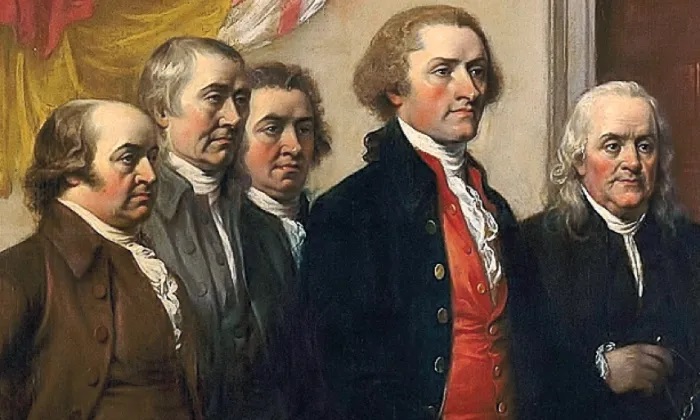I’ve been a tennis fan since early childhood. Each year, I look forward to following the pros – men and women – compete in big 4 events known as the Grand Slam: Australian, French, British and U.S. Open.

Which is why it came as both a shock and disappointment to watch a press conference where Maria Sharapova, the highest-paid female tennis star on the pro circuit, admitted that she had failed a drug test at the Australian Open earlier this year, having tested positive for meldonium, a drug used to treat ischemic heart conditions.
According to reports, the drug also increases oxygen flow to muscles and can be valuable in energy production – something that would surely have a positive effect on anyone running around on a tennis court through three sets.
“The commercial fallout was swift,” The New York Times writes (Mar. 7). “Nike, one of Sharapova’s longtime sponsors, announced in a statement that it was suspending its relationship with her ‘while the investigation continues.’ Sharapova has her own clothing line with Nike, with whom she signed an eight-year extension in 2010 that could reportedly be worth up to $70 million.”
In most cases, athletes caught using banned drugs are using them with the specific intention of becoming stronger, faster, sharper. However, that is not quite the case with Sharapova.
“I was getting sick very often,” Sharapova said, explaining her condition to reporters. “I had a deficiency in magnesium. I had irregular EKG results, and I had a family history of diabetes and there were signs of diabetes.”
“Sharapova’s lawyer, John Haggerty said in an interview after the news conference that the medication ‘brought these conditions that she had under control.’
“Dr. Steven Nissen, chairman of the department of cardiovascular medicine at the Cleveland Clinic, said that the drug was not available in the United States but that it seemed to be used elsewhere to treat chest pains from severe heart disease.
“ ‘There is no way it would be clinically indicated in a healthy young athlete,’ he said.
“Sharapova indicated she continued to take the drug while regularly checking the list through the years to confirm that it was not prohibited.”
At the press conference Sharapova admitted that she had not look at the list this year.Nonetheless, rather than wait for the completion of the investigation or deny the results of the testing, the tennis star took full responsibility.
“I think it’s very important to have a great team around you with coaches and doctors, but at the end of the day, everything you do is on you,” the tennis star said.
“In higher doses, Haggerty said, meldonium can serve as a performance-enhancer. Because Sharapova was taking a prescribed dose for health purposes, he said he would probably request a minimal penalty from the I.T.F. …
“Under the rules of tennis’s antidoping program,” The Times points out, “Sharapova’s positive test would not normally have been announced by the I.T.F. until the adjudication process had been completed. But she decided to make her case public and Haggerty said she did not intend to request that her B sample be tested.
“ ‘I thought it was very important for me to come out and speak about this in front of all of you, because throughout my long career,’ Sharapova told the media, ‘I have been very open and honest about many things. I made a huge mistake, and I’ve let my fans down. I’ve let this sport down that I have been playing since the age of 4 and that I love so deeply.’ ”
Asked to comment, Serena Williams (Mar. 9) said, “In sport and in life, there’s always a double standard. Everyone knows that, whether it’s a race thing or sex thing. However, this is a different thing. As Maria said, she’s ready to take responsibility. And that takes courage and heart.”
Justine Henin, another top woman’s player said, “It’s not nice what happened. Not good for the game and not good for Maria at the moment. We’re not in position to judge. Some questions need to be asked, and it’s hard to give an opinion. But rules have to be followed.”
Sharapova appears sincere and doctors seem to validate her medical history. So, it will be interesting to see what the final ruling by the International Tennis Foundation is. For now, the I.T.F. has temporarily suspended her pending the completion of their investigation.
Comments
Leave a Comment











I enjoyed your fair and balanced article on Sharapova. I researched meldonium and there are several non-biased clinical studies showing benefit to angina, coronary artery disease — double-blind studies and ostensibly reliable.
It is fair to note that it was banned January 1, 2016, and I believe the lady when she said that she didn’t check the new “list of banned drugs” and applaud her coming forward. She has taken it for 10 years and honestly, if my wife could take it and look that good, I’d go to Latvia and get some.
Russian athletes have used it “for years”…nearly 20% according to one article (and they were the ones tested. It could be more). Perhaps it is effective for cardiac ischemia, as that is what it’s for; and it could be that the U.S. F.D.A. is behind the testing curve, because it is not made in the U.S. and hence not “submitted”? It wouldn’t be the first time.